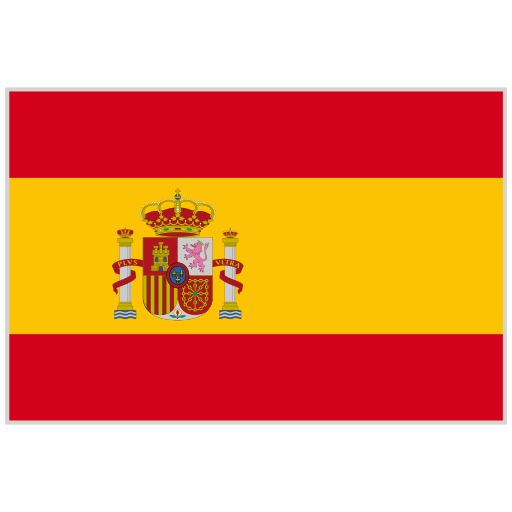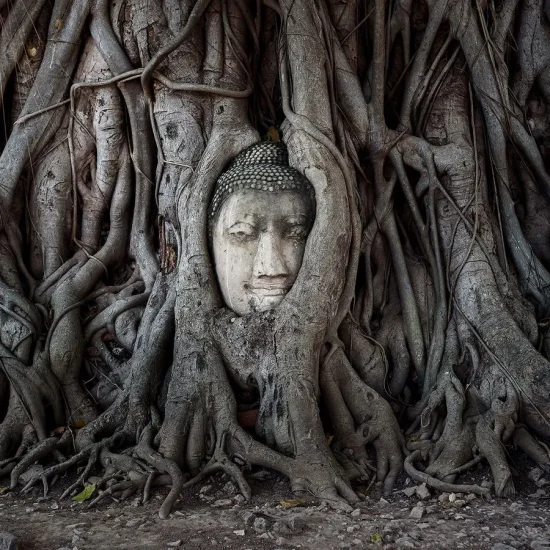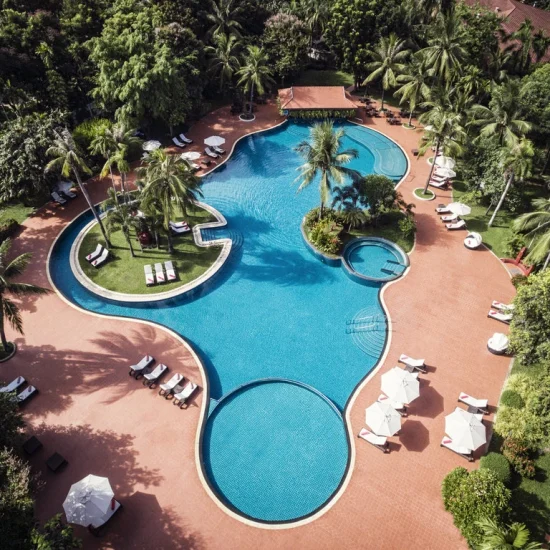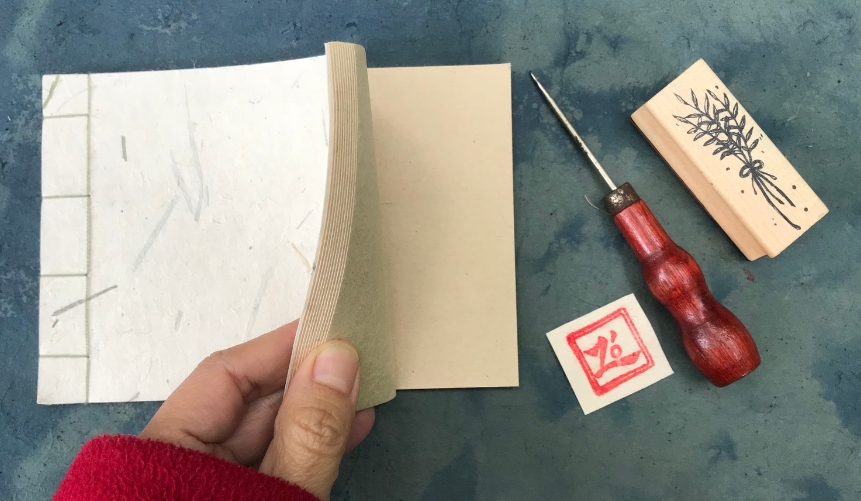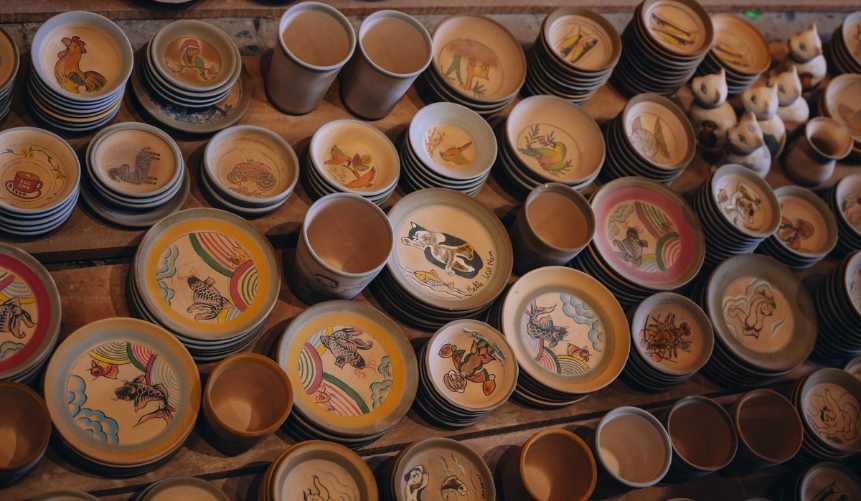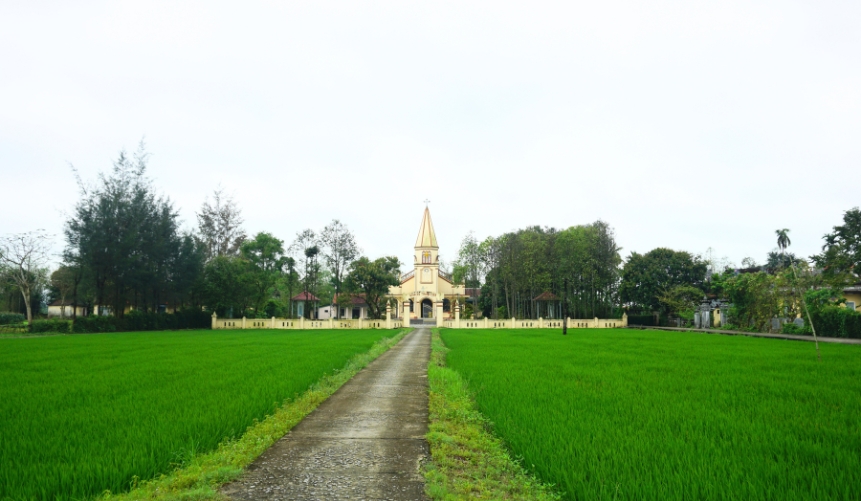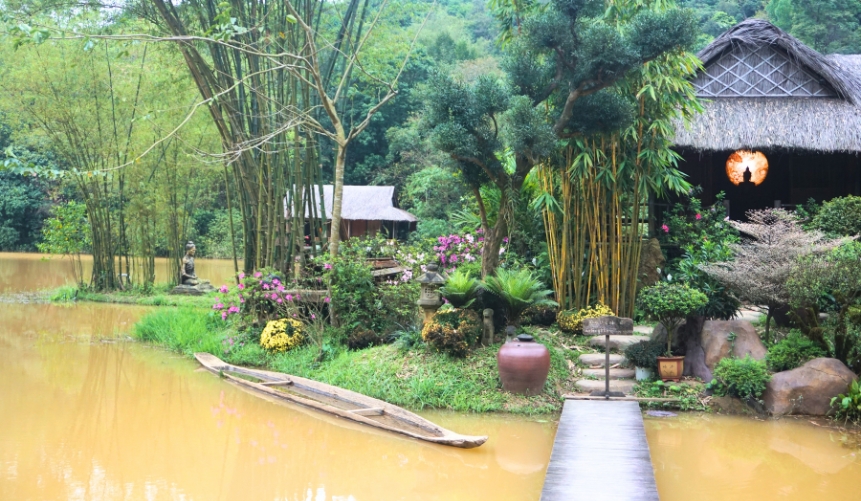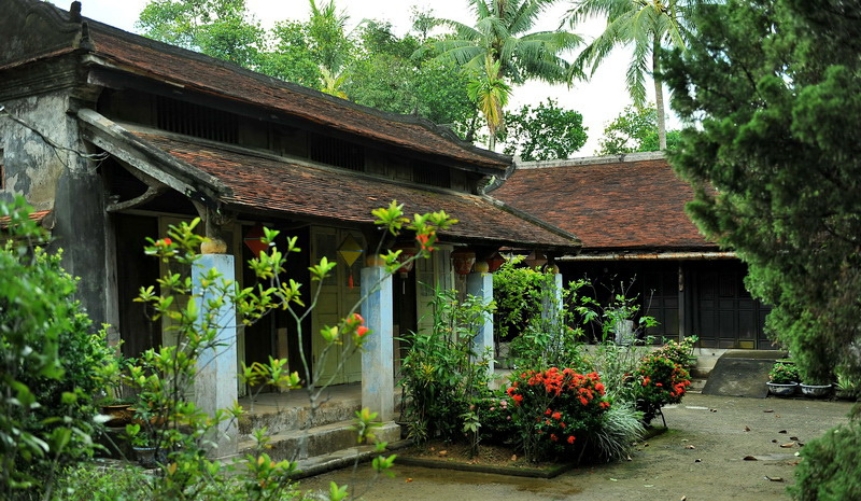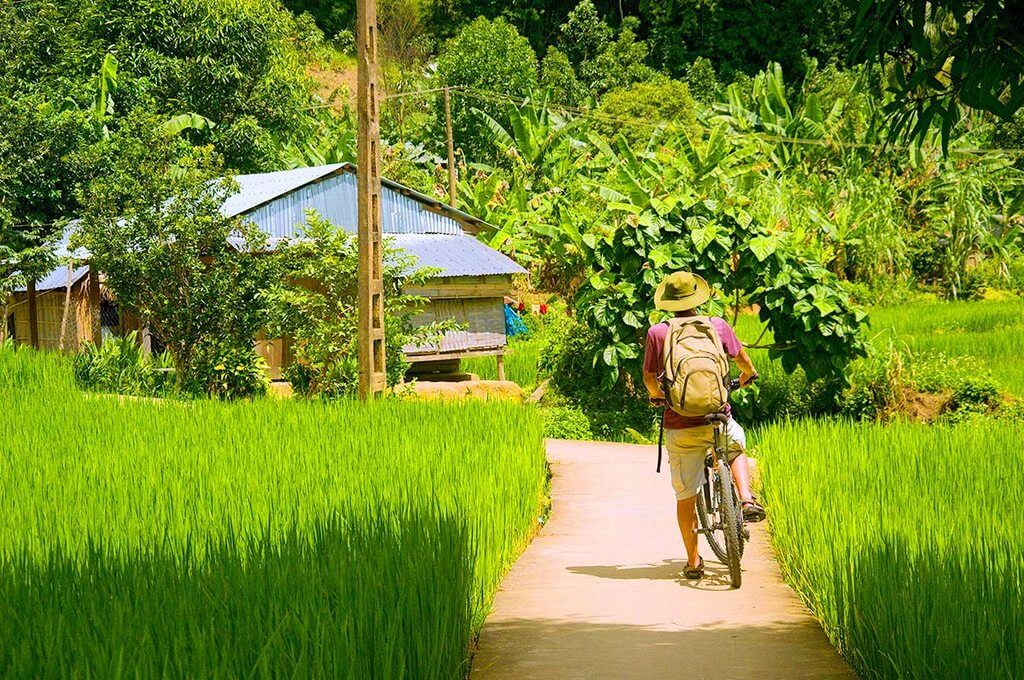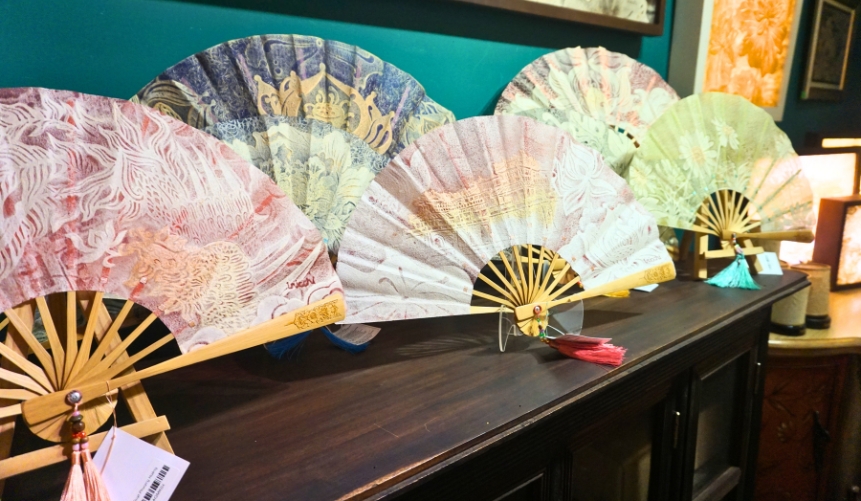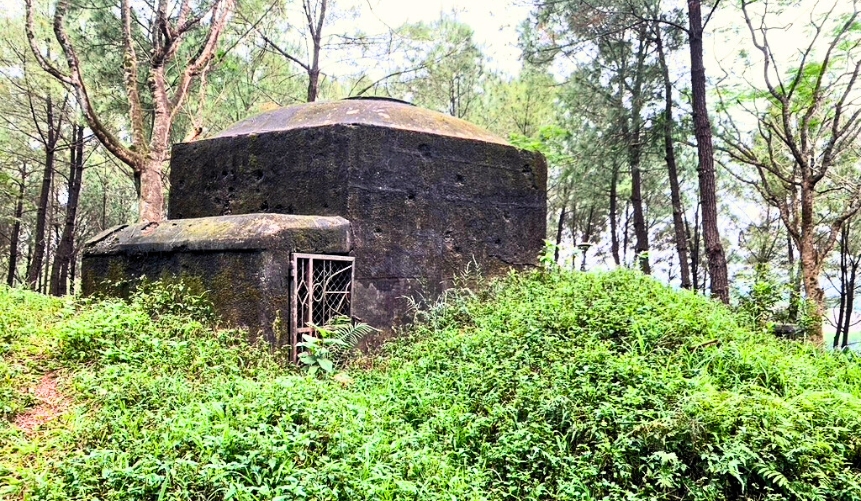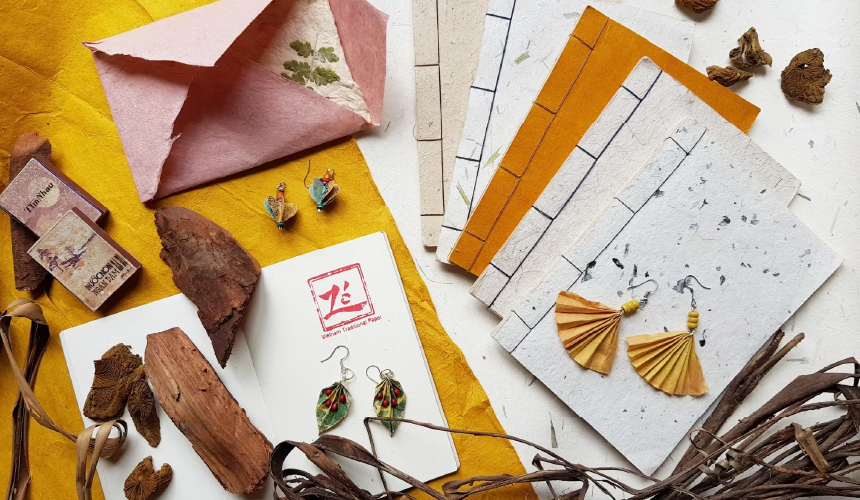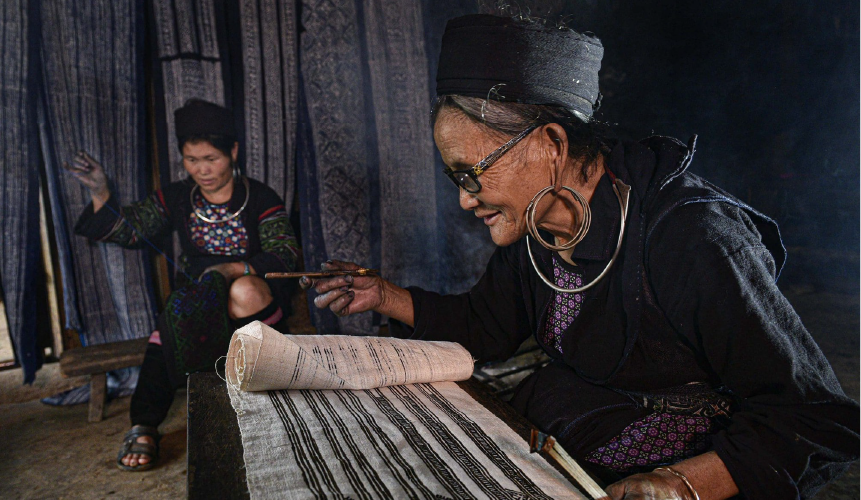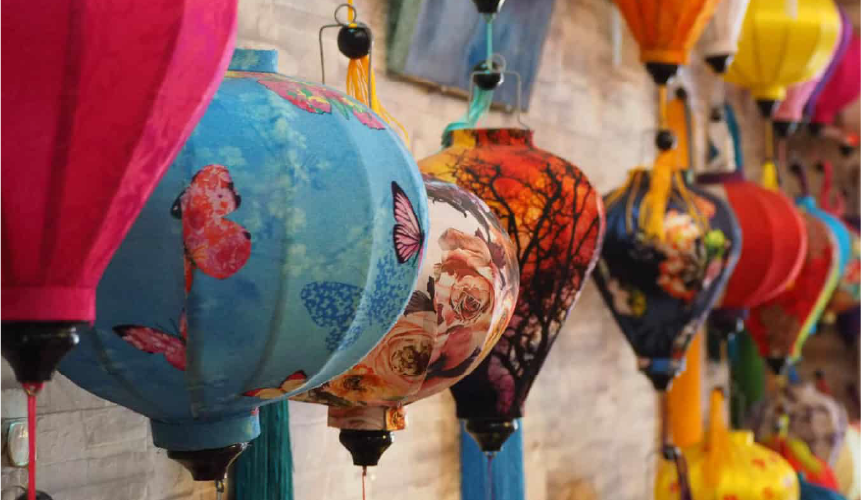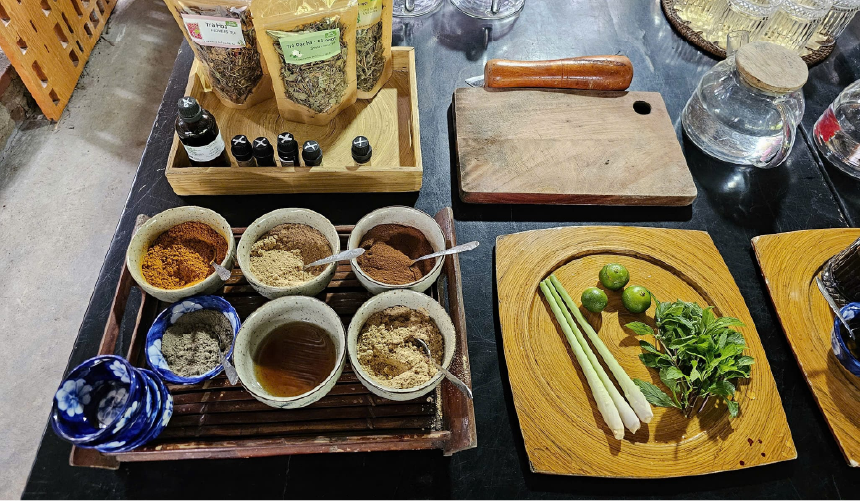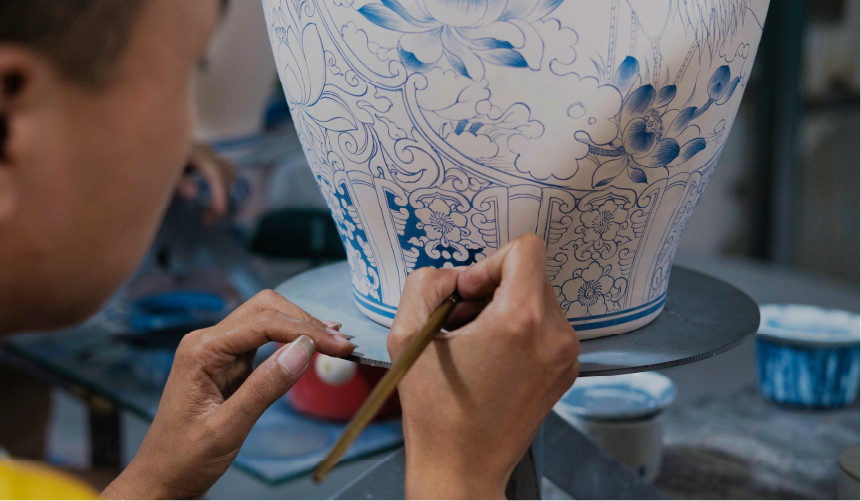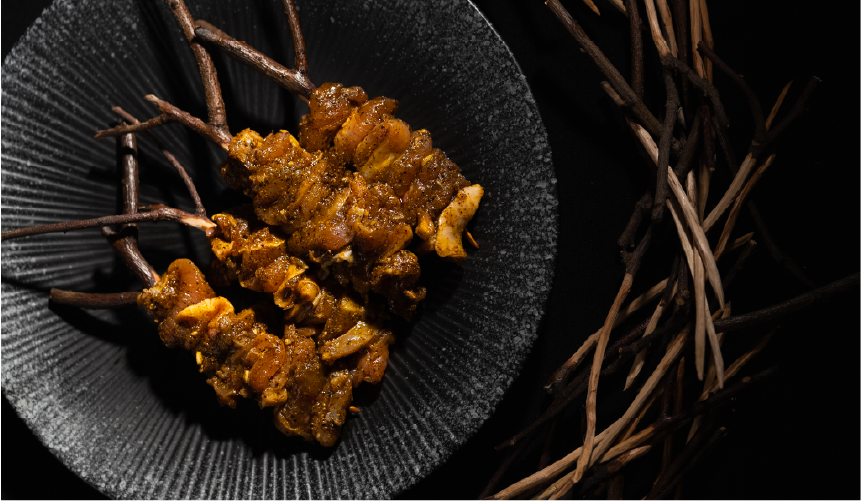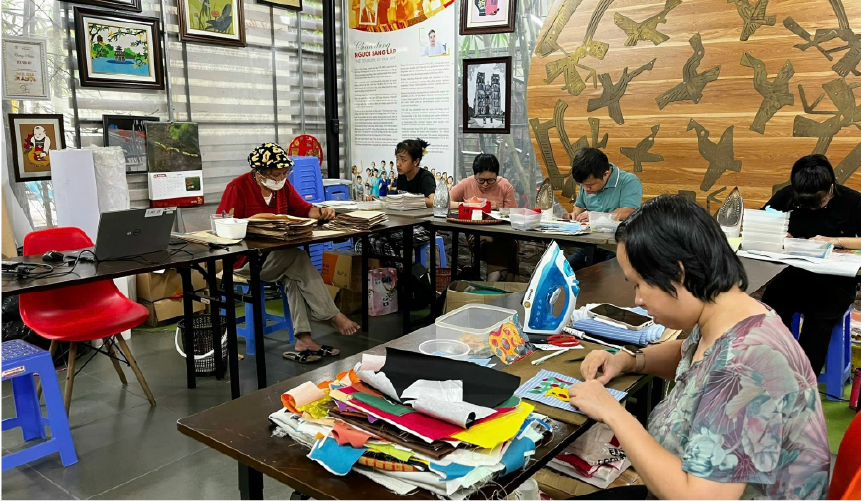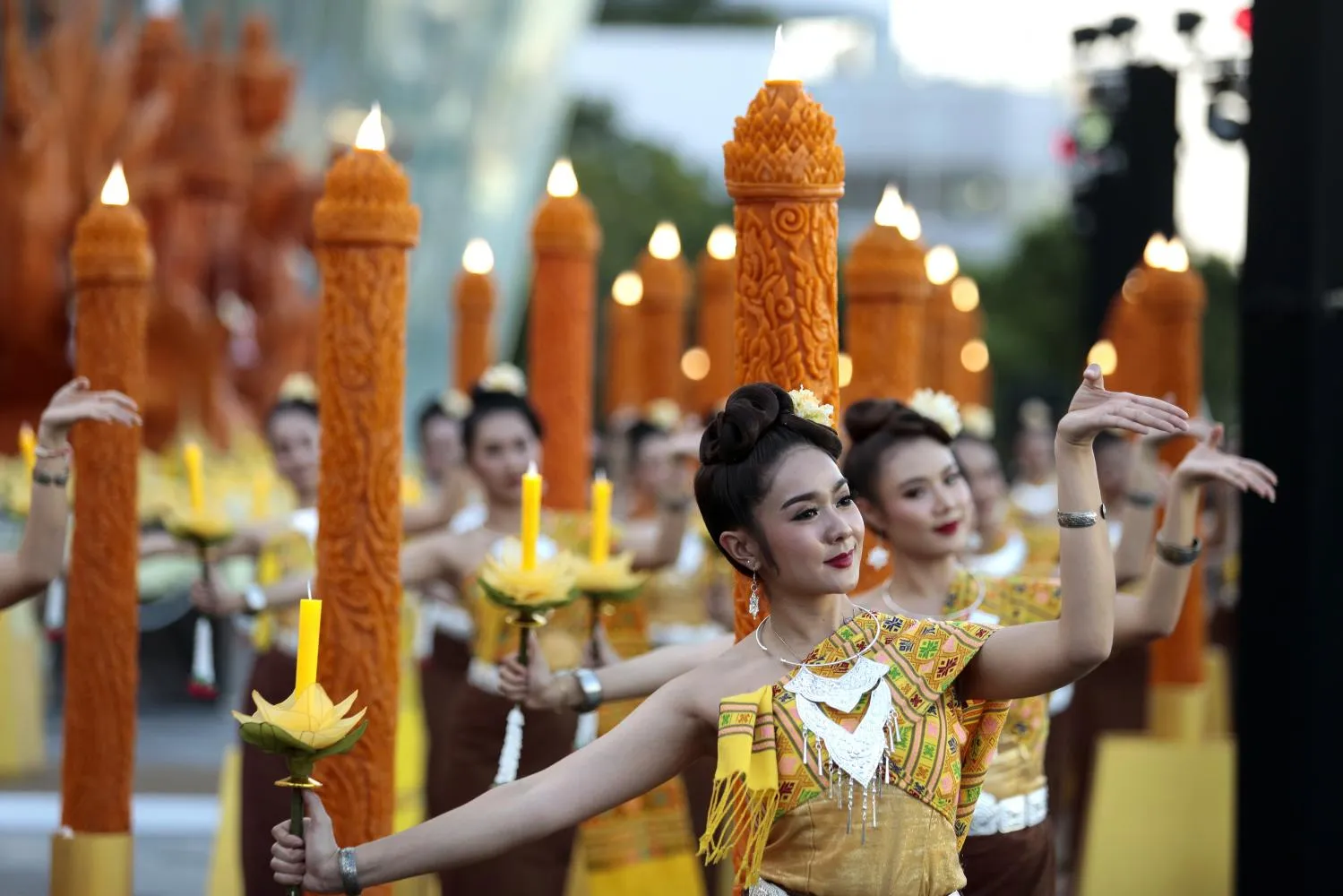
Top 9 must-experience festivals in Thailand
Thailand is a land of rich culture and traditions, where festivals are a big part of everyday life. Throughout the year, the country celebrates a variety of festivals, each with its own meaning and story. These events bring communities together, helping them express their beliefs, preserve traditions, and enjoy shared moments. For locals and travelers alike, festivals offer a deeper understanding of what truly defines the Thai way of life.
Here are 9 of the most famous and sacred festivals in Thailand that you shouldn’t miss during your exploration of the Land of Smiles.
Exploring top 9 must-experience festivals in Thailand
1. Water Festival (Songkran)
Time: 13 April – 15 April
Location: Everywhere in Thailand
Songkran is the traditional Thai New Year and one of the most important festivals in Thailand. It is a time for spiritual cleansing, family reunions, and paying respect to elders.
A core tradition is gently pouring water over the hands of parents and grandparents as a gesture of gratitude and to seek their blessings. However, this custom has evolved into large-scale, joyful water fights in many parts of the country. During the festival, both locals and tourists take to the streets with water guns, buckets, and hoses, etc,…transforming cities into vibrant playgrounds full of music, dancing, and people soaked from head to toe.

The streets come alive with water fights during Songkran (Photo collected)
It’s important to remember that monks are highly respected in Thai culture, so spraying water on them is strictly prohibited. Similarly, avoid splashing water on the elderly, pregnant women, and infants, as this is considered inappropriate.
2. Lantern Festival (Yi Feng)
Time: November
Location: Chiang Mai
Held in Chiang Mai on the full moon night of the 12th month in the Lanna lunar calendar (usually in November), the Yi Peng Lantern Festival lasts for 3 days and draws thousands of visitors from across the globe. Rooted in agricultural tradition, Yi Peng marks the end of the rainy season and the beginning of the harvest. It is a meaningful time when locals give thanks for nature’s abundance and show reverence to the Buddha, reflecting the deep spiritual and cultural fabric of Thai society.
The festival’s most enchanting ritual is the release of Khom loi – delicate lanterns made from rice paper. Visitors are invited to write personal wishes on the lanterns before releasing them into the night sky. As these glowing orbs float upward, they carry dreams, prayers, and burdens away into the heavens. Watching thousands of lanterns drift into the night sky is truly a magical and unforgettable scene, making it one of the most photogenic Thailand festivals.
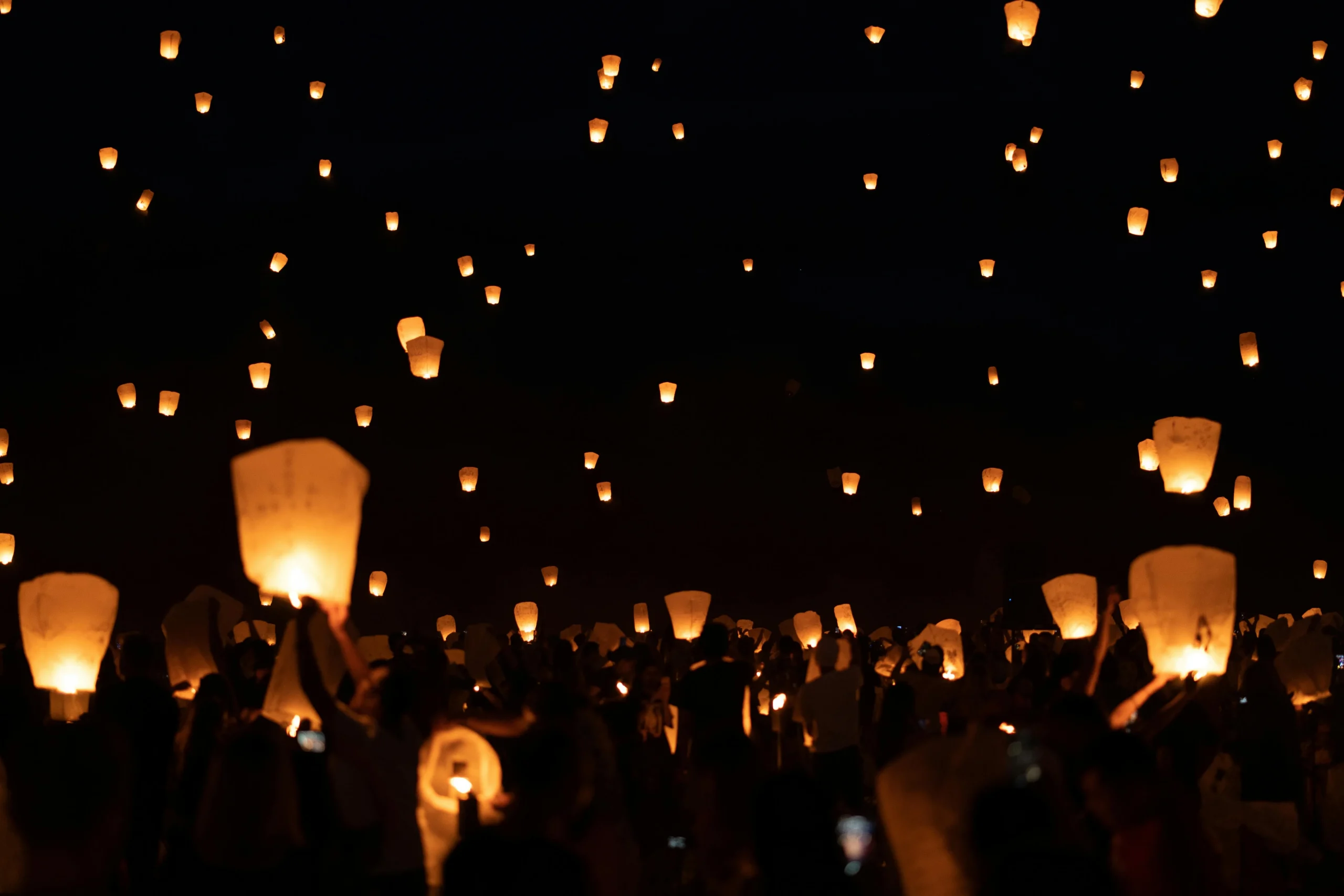
A magical night sky filled with thousands of floating lanterns at Yi Peng Festival (Photo collected)
The festival is celebrated both in free public spaces and organized events, where the setting tends to be more visually impressive. Tickets for this usually cost between $100 and $300 (often include transportation, lanterns, dinner, and cultural experiences). Since it’s a very popular event, it’s a good idea to book your spot and hotel early.
3. Lantern Floating Festival (Loy Krathong)
Time: November
Location: Everywhere in Thailand
This festival takes place at the same time as Yi Peng, but on a larger scale nationwide, with the most vibrant celebrations held in Sukhothai, Chiang Mai, Ayutthaya, and Bangkok.
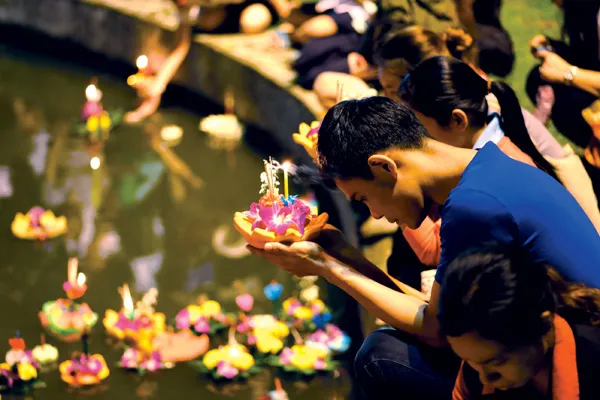
People pray and release floating lanterns onto the river (Photo collected)
In Thai, “Loy” means “to float” and “Krathong” refers to a lotus-shaped lantern. The festival is a time for Thai people to express gratitude and respect to the water goddess Phra Mae Khongkha for providing abundant water and for her spiritual protection and blessings throughout the year. Before releasing the Krathong into the water, people often place a strand of hair, nail clippings, and a coin on it, believing that this ritual will wash away bad luck and misfortunes from the past year.
As night falls, rivers across Thailand come alive with thousands of flickering Krathongs, casting a starry, magical reflection on the water.
4. Ghost Festival (Phi Ta Khon)
Time: June or July
Location: Dan Sai Town, Loei Province
Phi Ta Khon is a cultural celebration held in northeastern Thailand, often compared to Halloween in Western countries. Taking place on the weekend of the sixth full moon in the lunar calendar (usually in June or July), the festival typically lasts for three days.
During the event, participants wear colorful, handcrafted masks that completely conceal their faces. These masks are typically made from coconut tree trunks, with tall pointed hats decorated with symbolic motifs and willow branches, creating a striking and mysterious appearance.
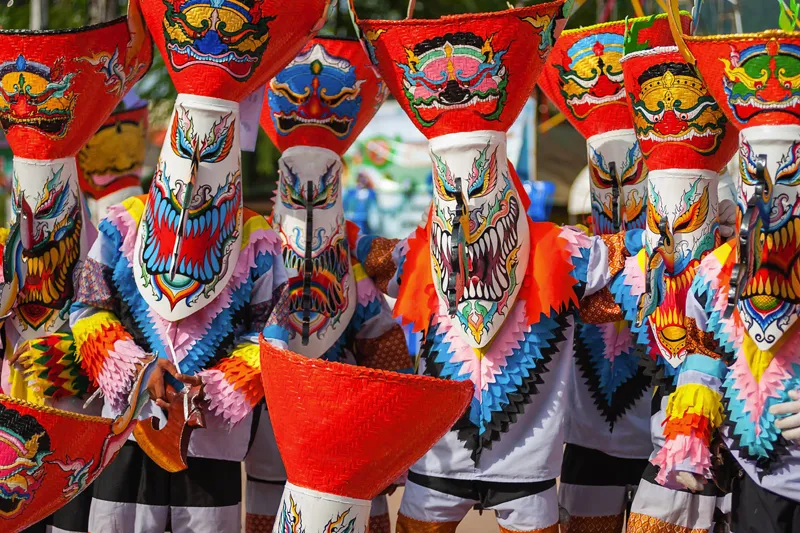
Locals wear colorful, hand-painted masks and parade through the streets (Photo collected)
One of the most fascinating elements of this Thailand famous festival is the spirit-calling ritual. Drumming and wooden clappers are used to summon ancestral spirits, filling the air with an intense and mystical energy. This tradition reflects deep spiritual beliefs and a strong connection to the supernatural world.
Getting to this festival can be a bit of a journey as it’s held in the remote town of Dan Sai, Loei Province. The most straightforward routes are by bus from nearby cities: about 4 hours from Udon Thani, 6 hours from Chiang Mai, or 7 hours from Bangkok . Since Dan Sai is a small town and the festival draws large crowds, it’s essential to book your accommodation well in advance to secure a place to stay.
5. Buffalo Racing Festival (Wing Kwai)
Time: October
Location: Chonburi
Wing Kwai Festival is an annual event held after the rainy season in Chonburi, typically in October. With over 150 years of history, it originated as a way for farmers to show gratitude to their buffaloes for their hard work in the fields.
The highlight of this unique Thailand festival is the thrilling 100-meter buffalo race. Shirtless jockeys ride bareback, trying to guide their buffalo to the finish line without falling off or losing control. It’s truly impressive to witness how fast these powerful animals can run.
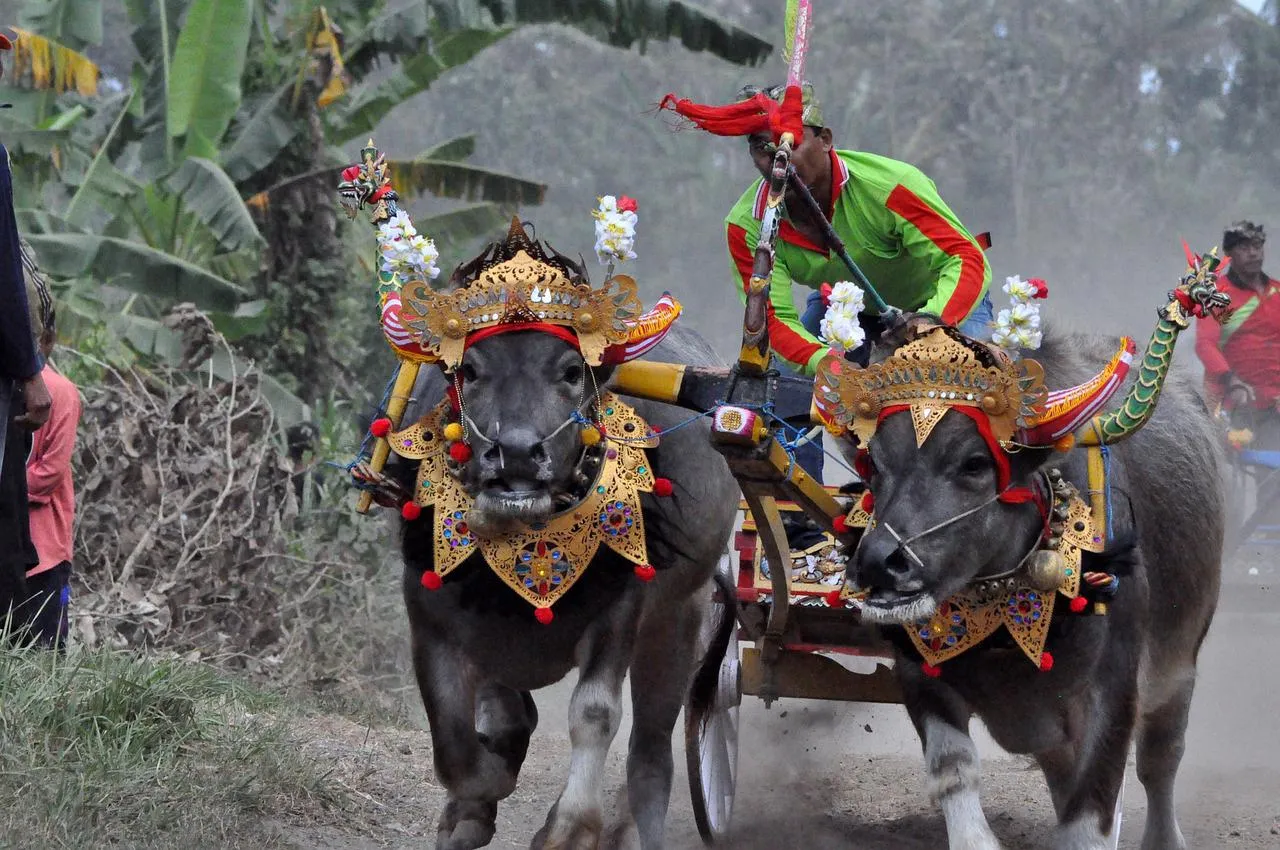
Competitor races their buffalo during the festival (Photo collected)
Chonburi is just about an hour’s drive from both Bangkok and Pattaya and the ticket prices often range from 200 to 1,000 baht, depending on the seating tier. Besides the race, visitors can also enjoy fun and quirky activities such as buffalo beauty contests, decorated buffalo parades, and even Muay Thai shows.
6. Phuket Vegetarian Festival (Tesagan Gin Je)
Time: October
Location: Phuket
The Phuket Vegetarian Festival is a vibrant annual event held in the 9th lunar month of the Chinese calendar, typically in September or October. It celebrates the belief that abstaining from meat and stimulants brings good health and peace of mind.
Unlike typical festivals in Thailand, the Phuket Vegetarian Festival is known for its intense and often shocking rituals. Mediums of the gods perform acts of self-mortification-walking on fire, climbing ladders of blades, and piercing their cheeks with sharp objects like knives or skewers. These spiritual devotees believe that Chinese deities protect them from pain, often leaving behind little blood or scarring.
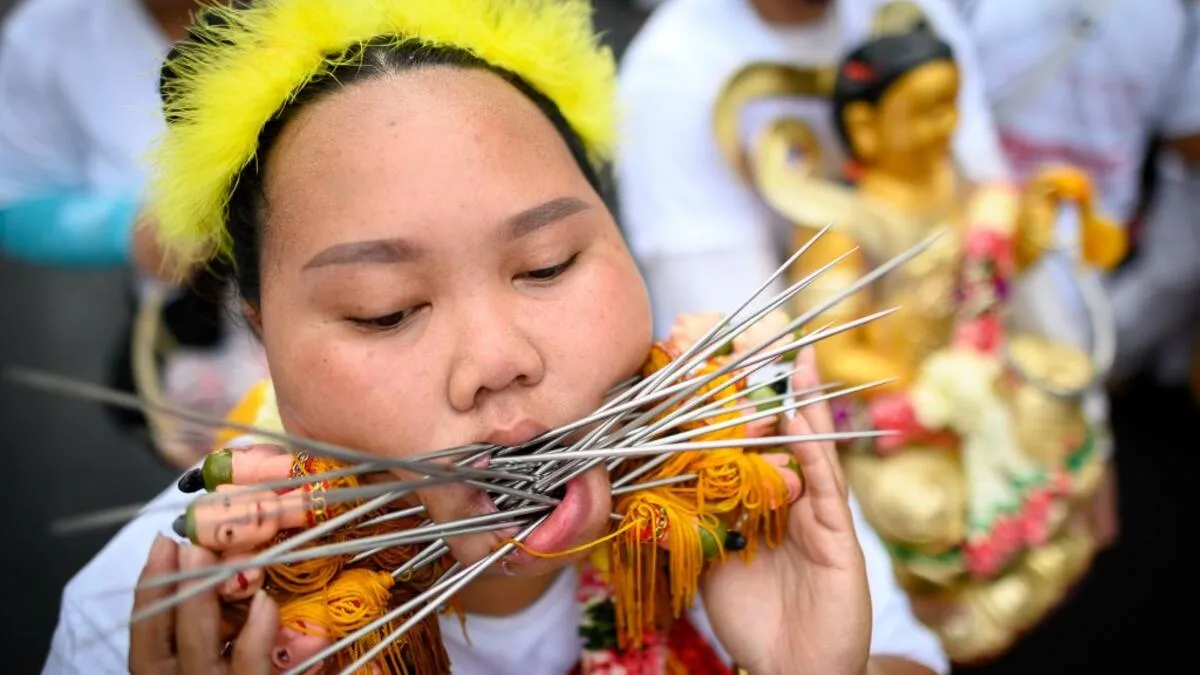
Gruesome ritual at the Phuket Vegetarian Festival (Photo collected)
These dramatic displays absolutely are not for the faint of heart. The festival streets can become chaotic, with loud firecrackers exploding throughout the day. In fact, most injuries occur not from those but from careless firework use. Visitors are advised to keep a safe distance during the more intense ceremonies.
7. Rocket Festival (Bun Bang Fai)
Time: May
Location: Isan region
Bun Bang Fai, or the Rocket Festival, is an annual celebration held by the Lao people and ethnic Thais in the Isan region of northeastern Thailand. Taking place in Yasothon every May, just before the rainy season, the festival is a vibrant way for locals to pray for good rains and a bountiful harvest. The event kicks off with traditional music performances and boat races during the first two days.
The main attraction of this cultural event is the dramatic rocket-launching competition on the third day. Participants fire homemade rockets, traditionally crafted from bamboo and gunpowder, though today, PVC or metal pipes are also used. These rockets vary in size and power, from 1 kg up to a staggering 120 kg.
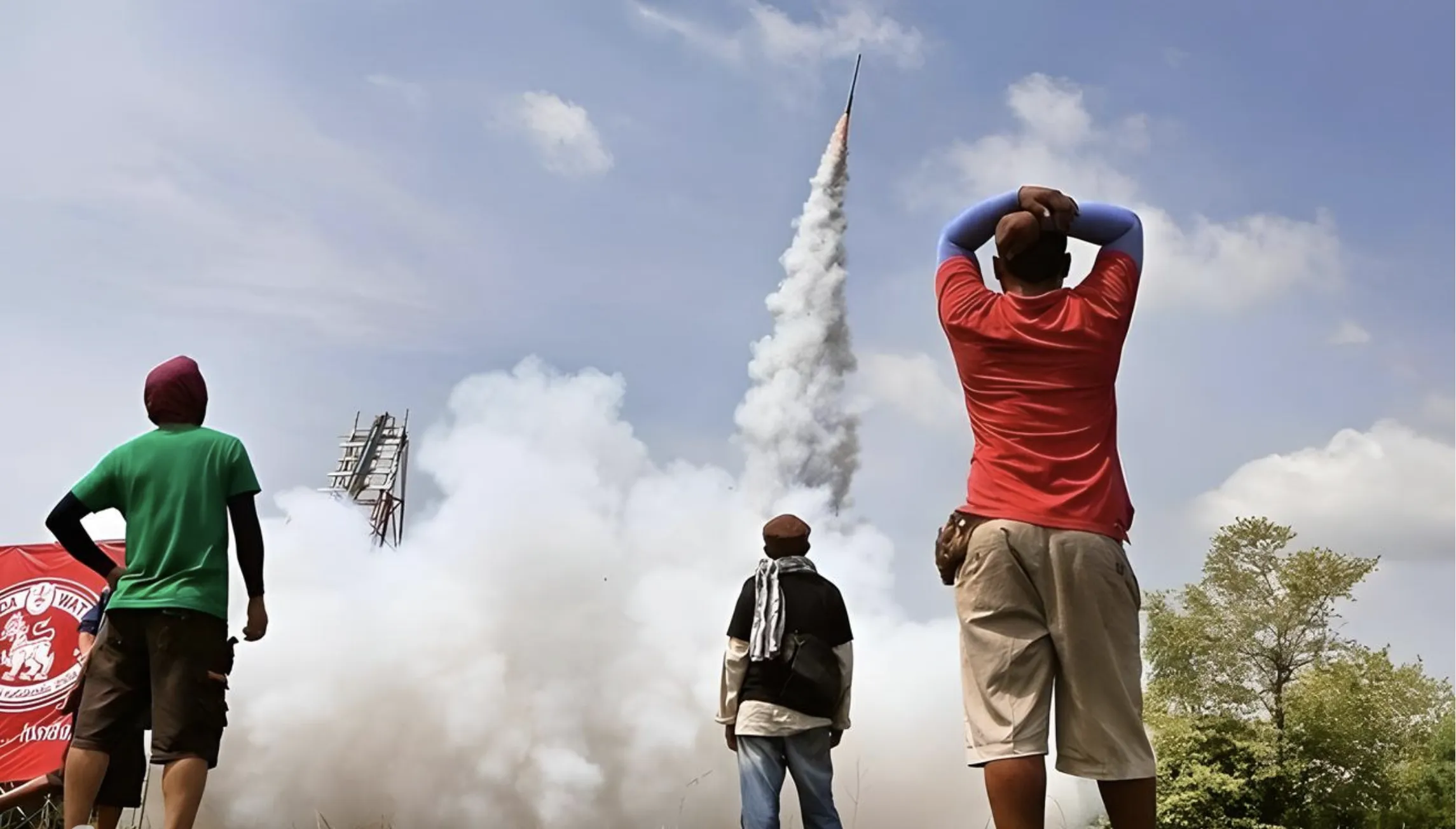
Locals launch homemade rockets to pray for good rains (Photo collected)
While the festival is lively and fun, visitors should remain aware of its inherently risky nature. For those attending, it’s essential to follow local guidance and keep a safe distance during the launches to fully enjoy one of the most vibrant and daring Thailand festivals.
8. Lopburi Monkey Banquet
Time: May
Location: Lopburi
The Monkey Banquet Festival is possibly one of the strangest festivals in Thailand. Held annually in Lopburi, Thailand, about 150 km north of Bangkok, it aims to promote local tourism and honor the monkeys, which are the city’s main tourist attraction.
At the heart of the celebration is a lavish, colorful “pyramid” buffet prepared for the monkeys in front of the Prang Sam Yod temple. Tables are elaborately decorated with an abundance of fresh fruits, vibrant salads, sticky rice, and traditional Thai desserts – some two tons and 100,000 baht ($2,750) worth. These mischievous guests then descend to ‘dine’, creating a lively scene.
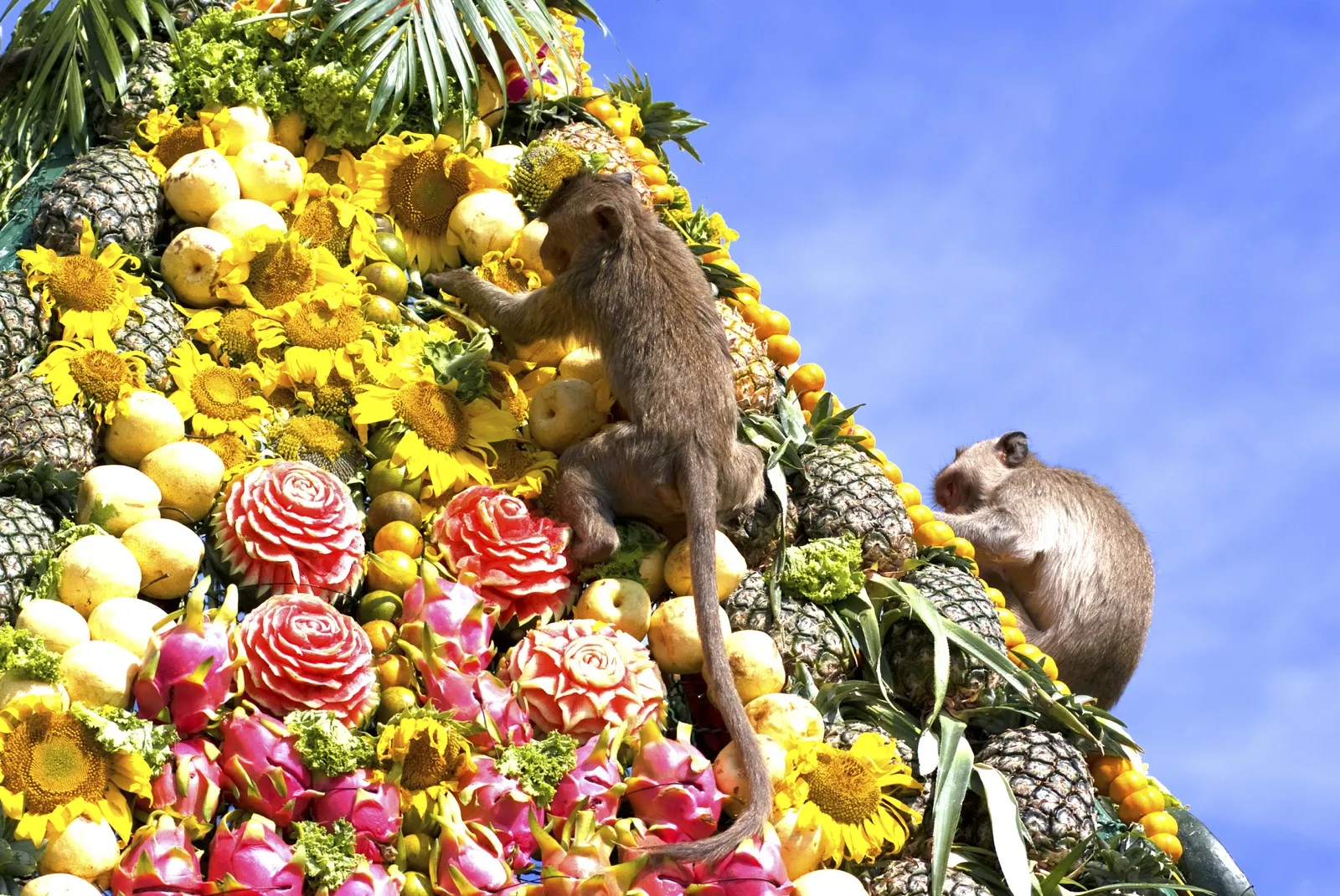
A typical feast for the monkeys at the Lopburi Monkey Banquet (Photo collected)
Many travelers are delighted by the chance to feed and interact with the monkeys, which is an experience believed to bring good luck. This playful connection with the animals has become a signature charm of Lopburi.
However, please be warned that these monkeys are far from shy. Regular feeding has made them bold or even mischievous, so it’s wise to keep your belongings close and your sense of humor closer.
9. Candle Festival
Time: July
Location: Ubon Ratchathani
The Candle Festival in Ubon Ratchathani is held annually at the beginning of Buddhist Lent (Khao Phansa), usually over two days in late July.
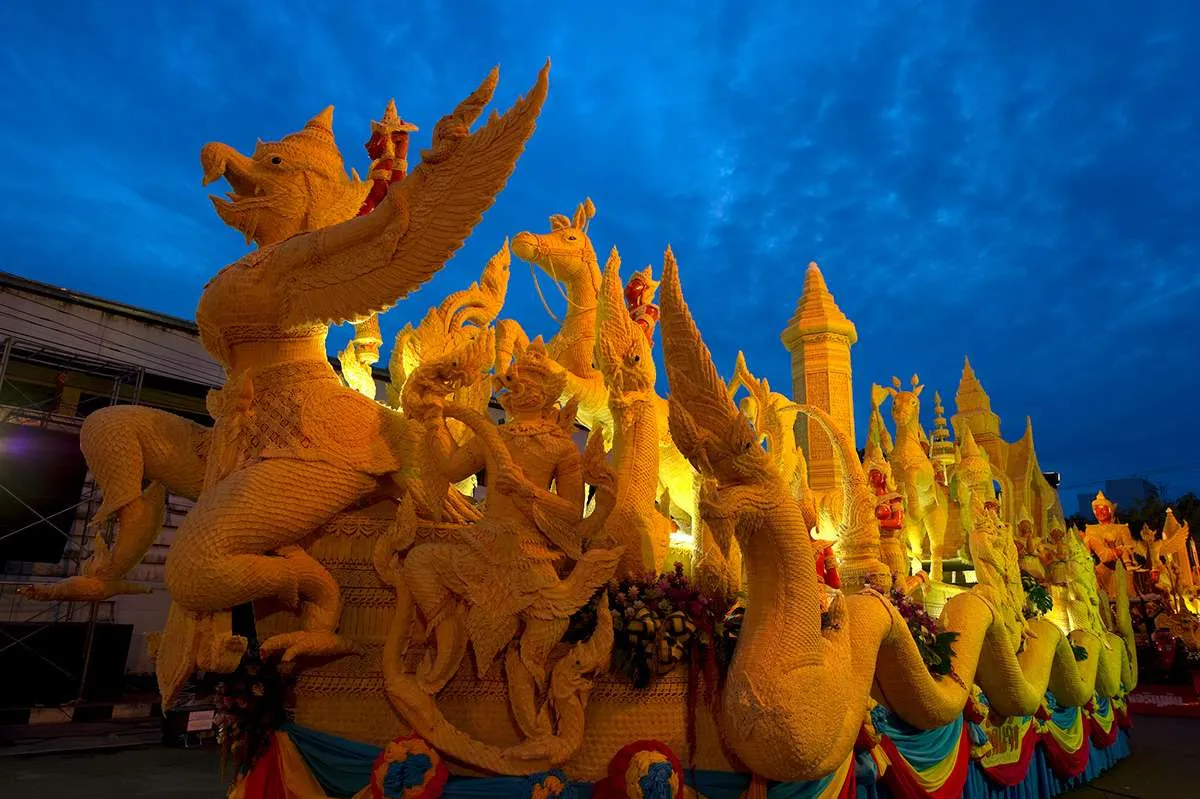
The giant wax sculptures at the festival (Photo collected)
The highlight of the event is the vibrant candle procession, featuring various elaborately carved wax sculptures slowly parading through the streets. Accompanying the floats are groups of young people dressed in traditional Thai costumes, dancing gracefully to the rhythm of local music.
Each candle sculpture typically illustrates stories from Hindu and Buddhist mythology, including legendary creatures like the three-headed elephant Erawan, the divine bird Garuda, and the serpent deity Naga.
Unlike many religious Thailand festivals, the Candle Festival is more relaxed and festive. While alcohol is restricted, visitors can enjoy local food, traditional music, Muay Thai shows, and wax sculpture contests.
The best time to visit Thailand and travel tips during festivals
Thailand has a tropical climate with three main seasons: hot (March-June), rainy (July-October), and cool (November-February). The cool season is generally the most pleasant for travel, especially from November to early February, when temperatures are milder and many major festivals take place.
As Thailand is a country with strong Buddhist traditions, travelers should be mindful of local customs, especially dress modestly when visiting temples or taking part in religious activities and women should keep a respectful distance from monks and avoid physical contact. Additionally, since many Thai festivals follow the lunar calendar, their dates can change each year. It’s always a good idea to check the festival schedule in advance.
Organizing trips during these times can be quite challenging, especially for travel agents and independent travelers alike. For major celebrations like Songkran or the Yi Peng Lantern Festival, demand surges months in advance. Hotel prices skyrocket, guides speaking less common languages (such as Spanish, German, or Italian) are difficult to secure, and popular experiences like lantern tickets sell out quickly and are non-refundable. In fact, individual travelers often book tours 3–6 months ahead, while group organizers typically confirm a year in advance to ensure availability. For last-minute bookings, options are limited and prices significantly higher. Even with smaller, local festivals which tend to attract niche markets such as French or German travelers, early planning is still essential.
With so many moving parts, working with a trusted local DMC in Thailand makes all the difference. From finding the right hotels to handling logistics and offering cultural insights, we take care of every detail. Our value lies in crafting the entire experience and the peace of mind that comes from having an expert partner on the ground. We provide our partners ready-to-sell packages with exclusive B2B rates. Contact us at info@365travel.asia or register on our agent hub here.





